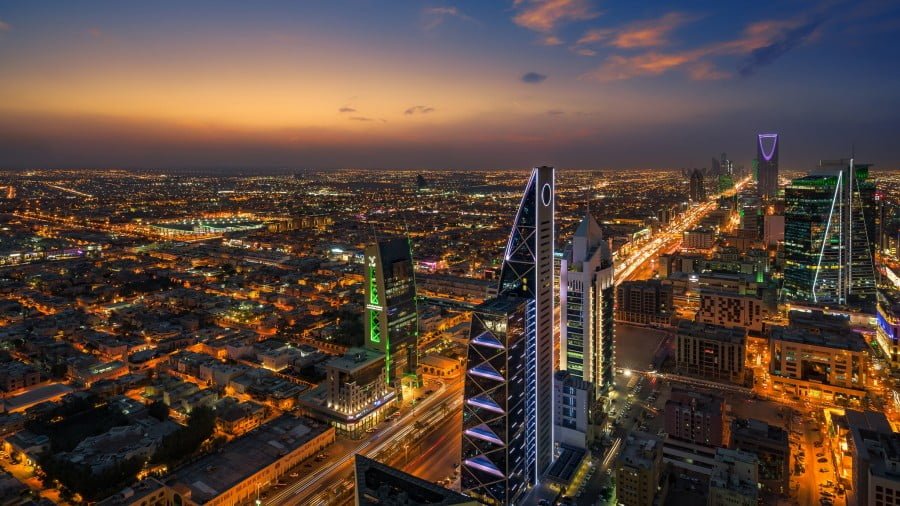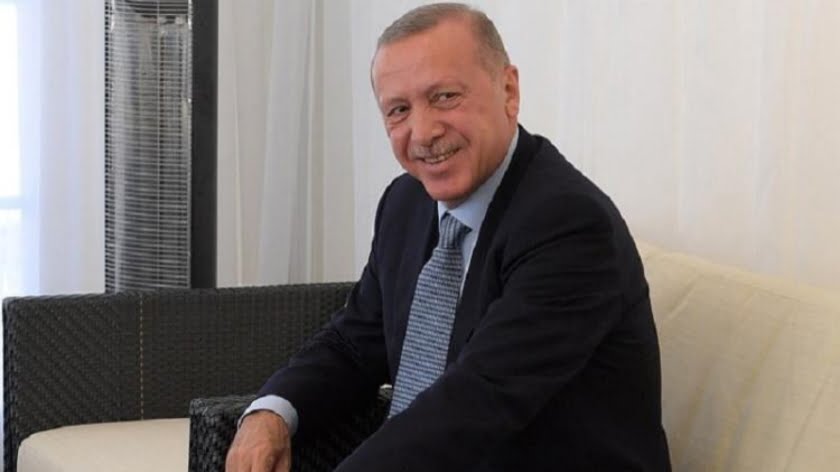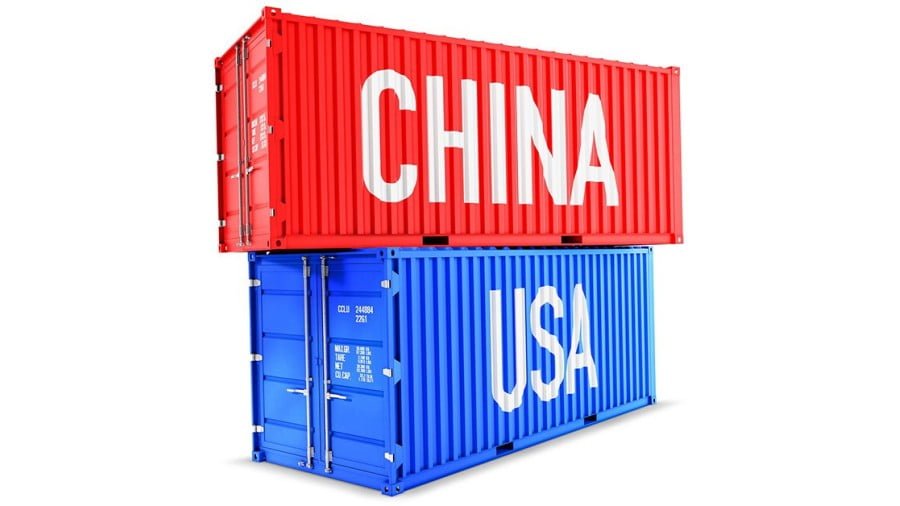Manifest Destiny Done Right. China and Russia Succeed Where the U.S. Failed
What crime have Eurasian nations committed such that the U.S./NATO military industrial complex has placed targets on them?
“The best way to predict the future is to create it.”
-Abraham Lincoln
It should be obvious that the world is being sucked into a new Cold War, with old school iron curtains, anti-communist rhetoric and even nuclear sabre rattling pushed by unipolar war hawks in the west. Unlike the first Cold War, this new variant strain features Russia and China working closely together along with Iran and a growing chorus of nations who are increasingly integrating into the Belt and Road Initiative.
What crime have these Eurasian nations committed such that the U.S./NATO military industrial complex has placed targets on them?

Simply that they have chosen to not submit to a unipolar technocratic scientific dictatorship.
Instead of embracing a dystopic destiny locked inside a shrinking geopolitical cage as Boris Yeltsin or Zhao Ziyang were happy to do not too long ago, today’s Eurasian intelligentsia has recognized that the only solution to the multifaceted crisis threatening civilization is located in the future. This may sound like a simplistic platitude to some, but from a geostrategic standpoint, the future is where creativity lives.
When resources are monopolized and systems of rules shaped by a sociopathic elite antagonistic to the basic rights of humanity, the only viable pathway of resistance to engage in successful combat is to change the rules of the rigged game and create new resources. This is done by increasing the opportunity to 1) make new discoveries which 2) create new resources, 3) translate newly discovered principles into new technological improvements that 4) increase the productive powers (mental, spiritual and physical) of humanity. If steps 1-4 don’t exist in the present, then where are they to be found?
I say it again: The Future.
The concept of positive future ideals teleologically (1) driving society forward was a powerful notion that once governed much of western civilization. The idea that man was made in the living image of a Creator, capable of participating in the continuous process of creation itself was an empowering notion which animated some of the greatest upward leaps in scientific progress, liberty, sovereignty, increased quality of life and population growth ever seen. In the early United States, this concept became known as “manifest destiny”… that God had a plan to expand the best of civilization and extend the fruits of progress to all in order to fulfill the Biblical mandate that humanity was expected to “be fruitful and multiply” and “replenish the earth and subdue it”.
While many goods to humanity arose out of this idea, it was also a double-edged sword that did great damage if used by tyrants, slave owners, or imperialists who ignored the reality that ALL humanity was endowed by the creator with inalienable rights, and not just a select few who felt they had the right breeding, religion, language, or racial characteristics.

A New Eurasian Manifest Destiny Awakens
In Russia, this future orientation has taken the form of a sort of 21st century “Russian Manifest Destiny” which aims to extend civilization into the Siberian Far East and Arctic, and beyond Central Asia, Mongolia, Japan, China and beyond. While many are accustomed to myopically analyze world events from a “bottom up” mode of analysis, it is clear that
Since 2018, Russia’s eastern development ambitions have increasingly merged with China’s northern extension of the BRI dubbed The Polar Silk Road which has amplified the growth of railways, roads, telecommunication hubs, ports, energy projects and sea corridors through regions long thought inhospitable to human civilization.
China has seen the birth of its own version of “Manifest Destiny” in the form of the Belt and Road Initiative, which was unveiled in 2013, displaying a power of transformation, interconnectivity, and win-win cooperation beyond anything even its greatest fans imagined eight years ago. Within a short period of time, over $3 trillion has been spent on small, medium and large-scale infrastructure projects now involving 140 nations (to varying degrees of participation.)

Glancing across the thousands of BRI projects springing up around the globe, we find the greatest array of rail lines (including high speed: maglev and conventional), integrated development corridors, new smart cities, new industrial hubs, pipelines and advanced science initiatives touching on space exploration, atomic power, fusion research, quantum computing and much more.
These corridors of development have stretched through northern lines via Russia as well as Central Asian states which includes the “Middle Corridor of the BRI”. More recently, we have seen the blossoming of a southern route from China to Pakistan, Iran, Iraq, Syria and Lebanon also take form with Syria finally signing up on January 12th, 2022. Nations across Africa have also enthusiastically jumped on board with over 48 of 54 African nations signing onto the BRI. Currently, 18 Ibero American and 20 Arab states have also joined the program.
Must Diversity Be Sacrificed for Unity?
Both China and Russia have extremely large nations with vast potential in terms of undeveloped resources, manpower, and technological needs, but they also host a diverse array of smaller cultural, religious, linguistic and ethnic groups from all walks of life.
The vast majority of Russia’s 146 million citizens live in the Westernmost 1/5th of the country with 80% of the population living in or near urban zones extending from the Baltic to Caspian Sea. In the expansive north-eastern regions of Siberia (occupying a landmass 1.3 times the size of Canada), only 24 million citizens are diffused throughout this underpopulated land.

China faces similar problems with its population density and developed sectors locked up not in the west, but narrowly along its eastern pacific coast. Nearly 94% of China’s population still lives in the east of the Heihe-Tengchong Line with the vast inner heartland housing only 6% of the Chinese population.
Russia hosts 193 ethnic groups comprising nearly 20% of its population and although China’s Han population is by far the largest demographic (representing 91% of the population), there are 56 distinct ethnic groups representing 113 million people, many of whom live scattered across Tibet, Xinjiang and Inner Mongolia.

The pressing quandary faced by Eurasian leaders planning out their programs of outward expansion can be stated in the following manner: How is it possible to extend scientific and industrial development across multi-ethnic, multi-linguistic territories both domestically and internationally without destroying the cultural heritage of the hundreds, if not thousands of smaller cultural groups along the way? Must development always occur at the expense of cultural diversity of smaller ethnic groups as has been too often the case in world history, OR is there an organic way to balance both factors?
How NOT to do Manifest Destiny
The irony is that up until recently, the concept of Manifest Destiny has been traditionally associated with the United States which shares many demographic characteristics with both China and Russia with the vast majority of population concentrated in the eastern half of the continent.

Sadly, the forces who shaped American expansion- especially during those first 125 years when Manifest Destiny had its greatest influence, have too often failed this test miserably. In its first 12 decades of life, the USA grew from 13 backward colonies in 1776 to 45 industrially-advanced states in 1900. Throughout those years, the wiser anti-slavery voices of Benjamin Franklin, John Jay, John Quincy Adams, Abraham Lincoln, Charles Sumner, William Seward, and William Gilpin were too often subverted by an anglophile deep state parasite class that ran both Wall Street in the north and the southern slave power.
This multiheaded hydra lurking within the heart of the USA had its own perverse ideas of “Manifest Destiny” which stood in diametric opposition to the ambitions of the great statesmen listed above.
Where abolitionist-leading figures like Benjamin Franklin and Alexander Hamilton encouraged the sharing of knowledge, technical skills, science and the fruits of technological progress to both blacks and natives without forcing religious conversions or crushing their local traditions, the deep state in both northern and southern zones of influence sought to only expand their power through the conquerors whip.
The southern perversion of Manifest Destiny promoted by Andrew Jackson, Jefferson Davis and Albert Pike envisioned increased black slavery and Native Americans crushed under the heel of the “superior” white race, and cordoned off into cage-like plantations or reservations never to have a say in their own destiny. Jackson’s 1830 Indian Removal Act emptied out valuable lands quickly handed over to southern cotton planters who quickly expanded the influx of black slaves from Africa vastly increasing the tension between free vs slave states leading to the inevitable Civil War of 1861-65.

It is often forgotten that under the Mazzini-connected freemasonic-laden presidency of Franklin Pierce (1853-1857), then-Secretary of War Jefferson Davis (later Confederate President) and General Albert Pike were in charge of advancing a “southern alternative” to the trans continental railway through slave states. Unlike the northern line (begun by Lincoln in 1863) which was designed to spread industrial growth and ultimately connect with China, (2) the southern version simply served as an iron cage to keep the enslaved under the control of masters. In this way, the confederate “Manifest Destiny” was no different from the Cecil Rhodes racist vision of the Cape to Cairo rail line that sought to keep the continent under the British heel or today’s EU-London “Green Belt Initiative”/OSOWOG Plan to force green energy grids from Africa to India.

During the Civil War, the British were more than happy providing weapons, warships, logistic support, intelligence hubs in Canada and funding to the rebels nearly resulting in Lincoln fighting a war on two fronts early on (one against the south and the other against the British Empire) (3).
While the legitimate defenders of American Manifest Destiny sought to avoid war, relying instead on diplomacy to grow their territories (see: the Louisiana purchase of 1804, Oregon Territory in 1848, or Alaska purchase of 1867), the “America” of Wall Street and Virginia’s slave power were always happy to pick a fight with a neighbor to spread their imperial ambitions (see the Mexican war of 1846-48, or overthrow of Hawaii’s monarchy in 1893).
Unfortunately, those American traditions that once resisted imperialism have withered away, with today’s republic a poor shell of its former self, purged of genuine patriots in positions of federal power. Today’s USA has hollowed out its industrial base, destroyed its cultural connection to Christian values and its faith in scientific progress resulting in an alienated nation of nihilistic consumers without a vision for the future.

The Growth of Eco-Colonialism in the 20th Century
The racist program of ghettoization of natives in the form of tribal reservations has segregated First Nation tribes from the rest of society for generations, keeping them locked into cycles of dependence, poverty, substance abuse, infant mortality rates and suicide magnitudes higher than the national average.
This manipulation of Native Americans has also seen these abused people used by game masters attempting to block broader continental development projects under a policy of “human ecosystems-management”. Since the late 1960s, it has become increasingly fashionable to treat native populations as just extensions of their local ecosystems- both of which are presumed to exist in stationary equilibrium by computer models which have been used to calculate conservation regions and optimal population growth for decades.

For anyone struggling to understand why the large-scale economic growth policy advanced by the likes of Franklin Roosevelt and JFK were derailed in the late 1960s with the onset of the Vietnam War, understanding this racist use of native reserves and ecosystem management is vital. The vast growth of conservation parks and federal lands kept off limits from all infrastructure investment was not the effect of warm-hearted nature lovers as many have been led to believe, but rather the effect of a cold calculated policy by geopolitical gamemasters intent on keeping society locked into a small controlled world of “limited resources”.
While liberal imperialists shed crocodile tears for the plight of natives long abused by selfish white colonizers, they were too happy supporting mass sterilization of native women throughout the 1970s, and keeping the natives without clean drinking water, reliable electricity, healthcare or even access to quality jobs.
One of the most vocal proponents of the trans-continental railway (extending into Eurasia) was Lincoln-ally William Gilpin (Colorado Governor during the Civil War) who astutely identified the reservations to be “like blocks of stone in the wall of a jail against the frontier line”.
Under the veil of this new type of modern colonialism, money was often infused into the coffers of corrupt tribal leaders who have been happy letting oil cartels exploit their resources while keeping their people locked in cycles of dependence and zero technological growth.
From this perspective, one can see a clear parallel in the application of a similar neo-colonial policy applied to Africa.
China: A Manifest Destiny with Dignity
Despite the loud denunciations from the western Five Eyes-managed political class, China’s approach to both African BRI partners and their own minority groups stands in stark contrast to this nefarious tradition of exploitation and cultural genocide deployed by the western oligarchy for generations.
What we have seen in places like Tibet and Xinjiang are cultural heritage centers, exploding literacy rates, the celebration and teaching of traditional languages, songs, stories and dances given full government patronage.
While evidence of this cultural growth has grown across all minority ethnic zones, we have also seen a dramatic growth in longevity, population density, quality of life, poverty reduction, infant mortality reduction, and access to advanced industrial skills, clean water, internet and abundant electricity.
On a religious level, over 24,400 mosques currently exist in Xinjiang, not to mention 59 Buddhist temples and 253 churches. In only eight years, the bane of Saudi-U.S. funded terrorism in China has been dealt with without a single Arab state bombed back to the stone age which is no small accomplishment.
In Tibet, high speed and conventional rail has connected the local communities that had long lived in poverty, to broader global markets with durable technical skills and training growing vibrantly among the younger population.

Buddhist temples are also thriving with the full support of the government. NED-controlled propaganda outlets in either region would have you remain blind to these demonstrable facts of Chinese life.
While concessions favoring Chinese firms are certainly built into most BRI-connected projects springing up across Southwest Asia, Africa, and beyond, the fact is that infrastructure (both hard and soft), new industrial hubs and educational opportunities are springing to life at breakneck speed.
Across Africa, we have found local cultural traditions thrive in tandem with the same policy we have witnessed in Tibet and Xinjiang. If this is news to you, try putting down the Epoch Times and watching some local African news or CGTN’s African channels.

China’s approach stands in stark contrast to those IMF-World Bank-USAID programs that have systematically kept poor nations in usurious debt-trap enslavement for decades providing money to buy a few fish, but never allowed the capability to fish for themselves. China, on the other hand has encouraged the growth of vast construction projects, manufacturing hubs, and perhaps most importantly, advanced engineering skills.
Overcoming Russia’s Monetarist Obstacles
In Russia, a privatized central banking system still largely influenced by monetary protocols shaped by the IMF has made actualizing Putin’s Far Eastern vision much more difficult than in China where a vibrant state owned banking system provides an invaluable instrument of long-term growth. Russia’s private central bank, established (in its current form) in 1990, still suffers from deep-seeded structural ties to the IMF, WTO and liberal ideologues swarming across the bureaucratic landscape ensuring that a doctrine of “balanced budgets” and free markets takes precedence over the emission of productive credit.
Despite these blocks, Russia’s unique version of Manifest Destiny has begun to spring into life with Sergei Shoigu’s “grand masterplan for Siberia” starting with the construction of five new cities housing 500,000 to a million citizens.
Additionally, the plans to expand and improve both the 9300 km Trans-Siberian Railway and its 4300 km southern Baikur-Amal Mainline rail being modernized, double tracked and integrated ever more deeply into Mongolia, China and even Japan. This dovetails the expanding International North South Transportation Corridor from Moscow to India via central Asia and Iran which should now be seen as another dimension of BOTH the BRI and Far East Vision [see map below]. As the project advances, freight traffic along these rail lines will increase from 120 million tons/year to 180 million tons/year in 2024.
This rail expansion is tied closely to Russia’s Development Plan for the Northern Sea Route adopted in 2019 and which seeks to increase annual shipments to 80 million tons by 2024. On top of ports and new arctic mining hubs, this plan includes the construction of 40 new vessels (including more nuclear icebreakers), railways, and northern seaports which will see 10 days of shipping time slashed from goods between China and Europe.
If this wasn’t enough, on January 15, 2022, Putin announced that proposals to construct a long awaited Arctic railway to the Barents Sea must be submitted by May 10 2022. This rail will extend to the Indiga Port in the Nenets Region which will host a year-round arctic port with a capacity of processing 80-200 million tons of cargo/year.
China and Russia have agreed to build Arctic science research centers in 2019 in order to “promote the construction of ‘Silk Road on Ice’”, while new designs for a new international scientific research base in Yamal called Snezhinka (aka: “Snowflake”) will be opened in 2022. In both instances, pure scientific research on Astro-climatology (the Arctic is the densest entry point for interstellar cosmic radiation which plays a driving role in climate change), species evolution and chemistry will be done in such new centers. Perhaps the most exciting fields of research will involve the testing of new artificial ecosystem designs requisite for sustaining human life comfortably not only in the Arctic but also on other celestial bodies like the Moon or Mars. Both nations have after all, agreed to co-develop a permanent lunar base which will be unveiled in the coming decade.
If we can avoid the trappings of nuclear war, then the discoveries that will be made along this exciting new chapter of inter-civilizational development are beyond the capacity of any computer model to predict, but they will happen nonetheless. The unleashing of creative discoveries by educated, inspired, goal-oriented human minds will increasingly awaken new technologies, and redefine humanity’s relationship to the periodic table of elements as new uses are found for the atom with wider access to the thousands of isotopes that still have yet to find a role in our economic systems. In this way, space and time itself will be condensed as magnetic levitation rail, nuclear propulsion systems and new energy sources will be brought online revolutionizing our ideas of “near”, “far”, “slow” and “fast” in dramatic ways.
Just think of the many months one would have to travel from old to new worlds in colonial days, to the mere hours such a transit takes on a hypersonic plane today. This is the sort of quantum leap expected as the 300 days transit to Mars currently required with chemical rockets will fall to a matter of weeks with nuclear propulsion.
Perhaps one might wish to accuse me of an overabundance of idealism, but so what?
This process is already unfolding before our very eyes, as political and scientific realities which many thought impossible only a decade ago, have already begun changing the trajectory of our collective future. If humanity’s phase shift into a mature self-conscious species is subverted once more… at a time when thermonuclear weapons litter the globe, there is no guarantee that we will get another chance.
Notes
(1) The term “teleological” refers to the idea that there is an intrinsic purpose or design shaping the material world, and that human ideas of law, and even economic ambitions are only good to the degree that they square with this purpose built into the fabric of the universe.
(2) One of the Trans Continental Railways most vigorous champions was Senator Charles Sumner, who passed a resolution in defense of the 1867 Alaska purchase (through which rail and telegraph lines were planned to move from the Americas through Eurasia via the Bering Strait crossing): “To unite the East of Asia with the West of America is the aspiration of commerce now as when the English navigator (Meares) recorded his voyage. Of course, whatever helps this result is an advantage. The Pacific railroad is such an advantage; for, though running westward, it will be, when completed, a new highway to the East.”
(3) This 2nd front against Britain was nearly sparked in 1861 due to the Trent Affair









